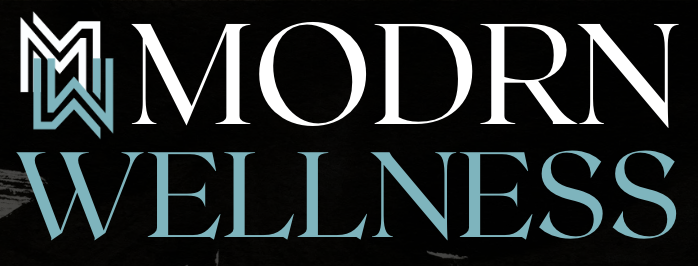What Is a Sound Bath? Experts Explain the Meditation's Origins and Benefits
Everyone from seasoned meditation experts to self-care newbies are trying them out as a way to chill and relieve anxiety.
BY NICOLE DELLERT AND EMILY REKSTIS
February 21, 2023
Meet the experts:
Alexandra Janelli, founder of wellness center Modrn Sanctuary in Philadelphia.
Sara Auster, a sound therapist based in Brooklyn.
Dave Rabin, MD, PhD, a board-certified psychiatrist, neuroscientist, and cofounder and chief innovation officer at Apollo Neuroscience.
Vinny Colandrea, My Zen Den sound practitioner based in Beacon, New York.
The Basics: What Is a Sound Bath?
Essentially, a sound bath is a meditation class that aims to guide you into a deep meditative state while you're enveloped in ambient sound played by instructors or sound therapists. "Guided meditation brings your focus back to the breath, a mantra, an emotion, [or] a part of the body," Auster explains. "During a sound bath, the sound itself is 'guiding' the meditation. This sound helps facilitate awareness of the present moment."
Participants often stay in a seated position on comfortable cushions during sessions, though some instructors ask attendees to lay on yoga mats. No matter what position the participant is in, they will likely be asked to keep their eyes closed and just listen.
ADVERTISEMENT
"By closing the eyes, clients are able to disconnect from the world around them and tune into their listening of the sounds that will begin to surround them," Alexandra Janelli, founder of the alternative wellness center Modrn Sanctuary in Philadelphia explains. "The guide may play one or several sounds producing instruments such as bowls, vocals, gongs, bells, rainsticks or tuning fork chimes to produce a frequency that can be perceived by the ears and brain."
The Benefits of a Sound Bath
In general, meditation is excellent for managing stress and improving your overall wellbeing. "Sound has been shown to help reduce pain, increase neural connectivity, and improve the quality of life," Auster explains. "In one example, integrative health research psychologist Tamara Goldsby's 2016 study on the effects of singing bowls on human health found that people attending singing-bowl meditations or sound baths reported a reduction in pain symptoms as well as less anxiety, tension, anger and feelings of sadness."
Dave Rabin, MD, PhD, a board-certified psychiatrist and neuroscientist, explains further: "Music and sound impacts us all the time by literally changing the rhythms of our physiology or the organ systems in our bodies, which change naturally without us thinking in response to the rhythms of sound," Dr. Rabin says. In fact, he says this change typically takes place in less than a minute. "Sound impacts us in these rhythmic ways very, very quickly and usually without us noticing it or being aware that our bodies are changing and our heart rate is changing and our blood pressure's changing."
This natural response to sound is why sound meditation can be a great place for people to start who might be new to meditation, or for those who may be in a rut with their regular meditation practices.
"As an adult, it can be very challenging to get into those [meditative] states. So using things like sound, whether it's delivered through your ears from instruments or from recording or whether it's through your skin like feeling bass sounds, the sound waves guide the meditation so they effectively calm the body," Dr. Rabin says. "They provide soothing stimulation to the body, and that soothing stimulation helps the body feel safe enough to drop into a meditative state quickly and deeply."
Dr. Rabin points out that the body has a natural response to sounds as part of a human's survival instincts. "Loud, fast sounds are a signal there might be danger around. If there might be danger around evolutionarily, we want our bodies to adapt, to be ready to get out of that situation if needed, or to fight, which means increased breath rate, increased blood pressure, increased heart rate, just as three examples," he explains. "Soothing, quieter music and soothing rhythms that are slower bring the body into a calmer, sleepier state and wind the body down. You can see lower heart rate, lower respiratory rate, and lower blood pressure."
The Ancient Origins of Sound Healing
Though many people may have only recently heard of sound baths, the use of music for healing is nothing new. From Tibetan singing bowls to Aboriginal didgeridoos, music has been used for its therapeutic effects for thousands of years. The ancient Greeks used sound vibration to aid in digestion, treat mental issues, and induce sleep — even Aristotle's De Anima detailed how he believed flute music could purify the soul.
At the end of the 19th century, researchers began to focus on actually proving the correlation between sound and healing. This research lead to studies that proved that music could lower blood pressure, decrease pulse rate, and assist the parasympathetic nervous system, which can affect digestion and some metabolic processes. This totally makes sense — who doesn't have a go-to song for decreasing their anxiety?
"You have a certain song on your playlist that really can move you, right? Like it can switch you from one thing to another inside emotionally," Vinny Colandrea, a sound practitioner at My Zen Den in Beacon, New York, says. "So on some level, we all recognize the power of sound."
Tools of the Trade: Instruments Often Used in Sound Baths
Sound baths use repetitive notes at different frequencies to help bring your focus away from your thoughts. "I always call [the instruments] a doorway into the present moment," Colandrea says. "One of the things that brings you into the present moment is dialing into your sensory perception; if you're seeing [or hearing] something beautiful, that can bring you into the present."
Typically, these sounds are created using traditional crystal bowls, gemstone bowls, cymbals, gongs, bells, rainsticks or tuning fork chimes. What instruments are used is completely up to the practitioner, but Auster notes that it’s not just about how the instruments sound — it's also about the sounds’ frequencies.
"Each frequency has a healing potential, and when combined, can create what is called binaural beats that when processed by the mind can help entrain the brain and induce the brainwaves of the mind to organize to those synonymous with the subconscious state," she says. According to the International Laboratory for Brain, Music and Sound Research, a binaural beat is a perceptual auditory illusion occurring when presenting two neighboring frequencies to each ear separately. Dr. Rabin further explains what happens when we hear these different frequencies at once: "When they are delivered in slightly different rhythms, this creates an interference pattern between the two rhythms that induces a third sound. This third sound is what people often refer to as the binaural beat."
Dr. Rabin notes that there has been evidence supporting the benefits of binaural beats, especially when it comes to improving mediation practices. “Ultimately, what we see as in terms of effects on the brain, are that binaural beats impact a lot of parts of the brain. Not just the auditory cortex that receives information from sounds, but also it changes electrical signaling in the parts of the brain like the inferior colliculus, the midbrain, the brain stem, and our sensory, emotional, and frontal cortex,” he says. "All these parts of the brain are interacting together all the time."
Auster continues to note that some key frequencies, known as solfeggio frequencies, have been used throughout history in sound healing to promote emotional shifts.
How a Sound Bath Works
Similar to a yoga class, each sound bath instructor has their own way of creating the flow of a session. After those participating get comfortable sitting or laying down, Colandrea likes to begin by creating a "push and pull" with the sounds of the instruments. For example, he may start off with instruments that are relaxing for 10 minutes, before transitioning to something that may build up tension. "It's sort of my flow," he says. "I try to create a journey through themes."
Other practitioners curate each sound bath with specific instruments. In sound therapy, it's believed bowls made from certain types of crystals and gems can channel different restorative properties. For example, tourmaline crystal is believed to absorb negative energy and emit positive energy. (Our beginner's guide to healing crystals can help you decipher which bowls would be good for your intended purposes.)
Just as classes will differ depending on the instructor, people’s experiences while taking a sound bath will likely be different, as well. "It's a process. As you go through the experience, know that things can happen slowly at first and then all at once. Just like falling asleep, some people will relax quickly, while others may need a bit more time to get into the deeply relaxed states," Janelli says. "Not everyone has profound experiences during a sound bath. In fact, each session you do will most likely be different."
No matter what your goals are, it may take some time to find the right sound bath for you. Treat it the same way you would find your favorite exercise class: through trial and error. For beginners, as long as you leave the normal "beta state" of being alert, concentrating, and reacting, then you should consider your experience a success.
So, Are Sound Baths Right for You?
Sound baths can be an excellent way to meditate, especially if you're in a rut with your usual self-care routine. “When you practice mindfulness, you are practicing the art of creating space for yourself — space to think, space to breathe, space between yourself and your reactions,” Auster explains.
That said, it's not a practice that’s accessible for everyone. Costs vary depending on location, but a group sound bath session can range anywhere from $30 to $65. Meanwhile, private sound baths could ring in at a much higher cost, depending on your guide. But if you’re able to find a class that works for you, you may decide sound baths are your new favorite way to get in touch with your body — and to unwind.


